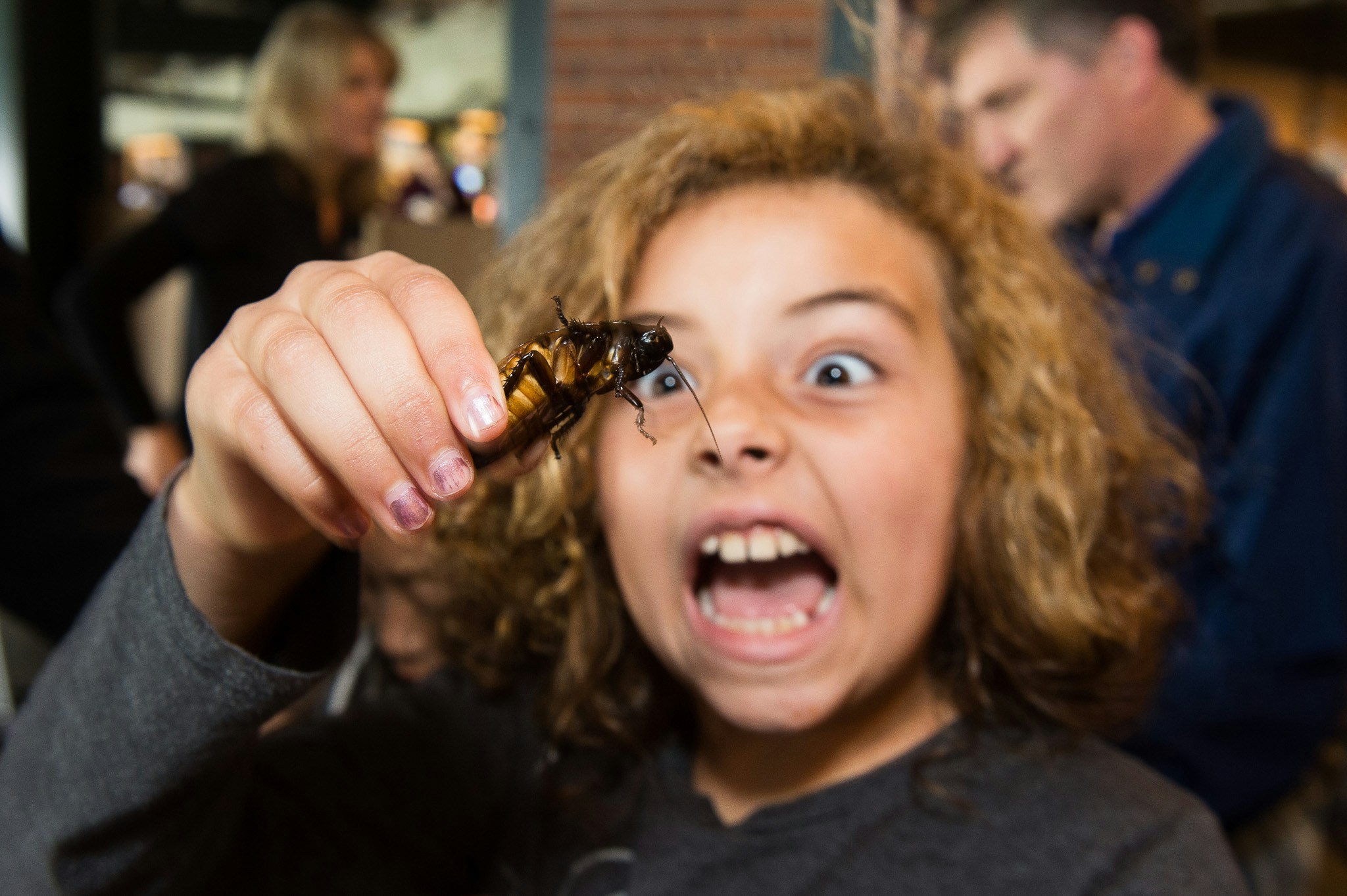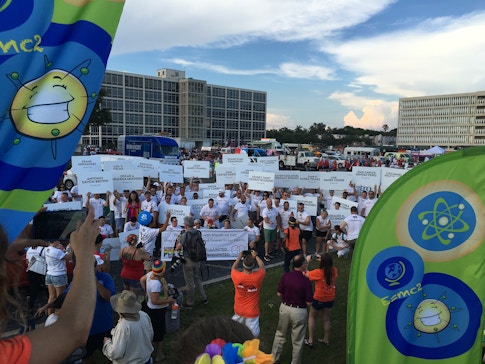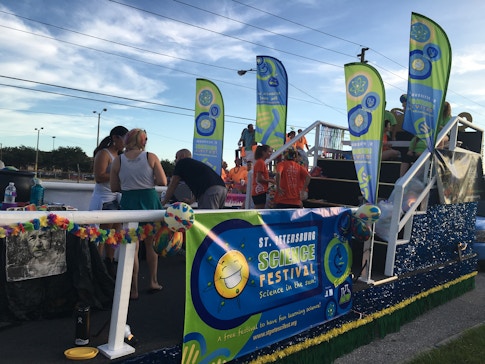
Stepping Out of Museums and Into Communities

It started like the kind of ice breaker that science advocates dream about: An 8-year-old girl approached a booth with a solar-system theme at a Missouri state fair, curiously examined a hunk of moon rock on display, and eagerly explained to the staffer in the NASA T-shirt why Jupiter was her favorite planet. “Then her dad just grabbed her hand and said, ‘Come on, this isn’t for us,’” recalls Ben Wiehe, who was staffing the booth that day several years ago. “And all of us were like, ‘No, come back!’ But we lost her.”
For Wiehe, the incident painfully illustrated the limits of what he calls “an evangelical bent” in public science outreach. “A lot of us operate with this underlying assumption that our duty is to ‘convert’ people by shifting their needle from ‘science negative’ to ‘science positive,’” he says.
Wiehe now embraces an alternative approach. As manager of the Science Festival Alliance’s Just Add Science initiative, he fits science-themed experiences into existing events and venues such as county fairs, sporting events and shopping malls. “There are much more interesting conversations to have with people who may not be science enthusiasts, but who are bringing their own context to this,” he explains. “It’s less about drawing people out of their comfort zones toward science, and much more about being willing to leave our comfort zones as science communicators in order to meet them.”
Below, Wiehe describes in his own words what Just Add Science’s “meet people where they are” approach looks like in practice — and how its development required some on-the-fly rethinking of basic assumptions about science communication.
Meet People Where They Are, as told by Ben Wiehe
I used to be involved in running a science cafe in Cambridge, Massachusetts. There are an awful lot of opportunities in Cambridge for people to get together and talk about science or meet scientists. It’s going on all the time, all over. At a certain point I thought it would be more interesting to try to find ways to get conversations going with people who didn’t sign up for a group discussion about science.
We take competitive applications [for Just Add Science events], and one of the things we’re looking for is: Is this risky for you? Is it substantially new for you in some way? So we’ve had multiple teams across the country trying weird things and pushing themselves. Sometimes they just have to figure things out, often from scratch. A Just Add Science team in Florida called Science on Parade wanted to do a science-themed float as part of St. Pete Pride, an LGBTQ parade. This is the largest pride parade in Florida; something like 90,000 people show up. It’s also at night and is an incredible, raging, moving party. How do you do a ‘science float’ for that? The organizers who put this together had never done a parade float, period.
They came up with a plan to shoot foam rockets into the audience, and instead of throwing beads — which is a very typical pride-parade thing — they were going to be handing out diffraction glasses, which have lenses that create rainbows around every light source when you look through them. The idea was that these rockets and glasses could spark your curiosity in some way. They were approaching it from the classic angle of the informal science educator: “What kind of lessons might people learn from this?” But they had some trouble recruiting people to get involved.

And then, unfortunately, a few weeks before the parade, the Orlando Pulse nightclub shooting happened. That obviously hit this community really hard. As the event got closer, the Science on Parade people really started to wrestle with their approach. They ended up having a moment where they just said, “Look, this is not going to be about education. We’re not rolling a big whiteboard down the parade route. This is about showing up and being part of our community. We are going to have people cheering for us, and us cheering for them, and that’s all we want.”
And all of a sudden, they had lots of people signing up to participate and local scientists saying, “I have to be on that float.” They even managed to get a DJ, whom they installed on the float to play “science-themed club music.” I don’t know what that means, but they had scientists onboard dancing and having a great time, shooting rockets off into the audience and throwing diffraction glasses at folks and running out into the crowd.
Now, before they did this, there was this question hanging in the air: “Why are we even doing this? What is it that we are trying to achieve here?” But after doing it, and just feeling the emotion of it and seeing that it was about different segments of the community showing up and having pride together, the question became: “Why would we ever not have a science float in a Pride parade? In fact, there should be one in every Pride parade.” That’s the kind of 180 that I’m really eager to have as many people go through as possible. Not just ‘the public’ — the people who are doing science outreach need to experience this too.
*Hero image courtesy of the Bay Area Science Festival, which is part of the Science Festival Alliance” .*
Stories of Impact highlight the real-world influences of Science Sandbox projects through personal narratives, videos and interviews. Discover more stories here.


